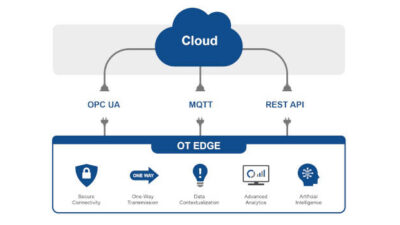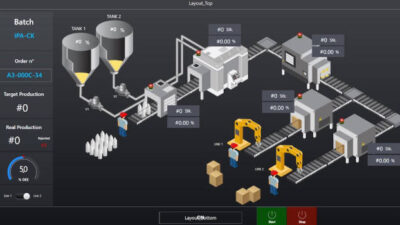Adapt past the disruptors to realize benefits from industrial data analytics.

Industrial Data Analysis Insights
- Sometimes what should be observed about industrial data analytics isn’t understood or applied: Progressing with data analytics in a factory, process plant, or other industrial facility requires adapting new workflows and technologies, as suggested by Laurie Cavanaugh, director of business development, E Tech Group, in an April 21, RCEP PDH webcast (archived for 1 year).
- Experiences with data mining, aggregation and analytics as consumers (using smart phone and other online devices) make many ask why more data analytics capabilities haven’t been applied to industrial applications.
LEARNING OBJECTIVES
Understand commercial influences of increased demand for industrial data analysis.
See where more industrial information could be useful.
Learn about disruptors to data analytics, including chip shortage and cybersecurity.
Sometimes the obvious isn’t: Making progress with industrial data analysis requires adapting to new technologies and processes, as suggested by Laurie Cavanaugh, director of business development, E Tech Group, in this partial transcript from the April 21, 2022, RCEP PDH webcast (archived for 1 year), “Just enough industrial data analysis?“ Text below has been edited for clarity.
Related data analytics articles
Relate articles in this data analytics series are:
– Webcast preview: What is just enough industrial data analysis?
– Webcast Q&A: Questions answered: What is just enough industrial data analysis?
– How to get started with industrial data analytics
– How to overcome obstacles to industrial data analysis
– Industrial data analysis case studies, effectiveness.
-

Smartphones are among commercial technologies setting high expectations for smarter data analytics use for industrial applications, explained Laurie Cavanaugh, director of business development, E Tech Group, in the April 21, 2022, webcast, “Just enough industrial data analysis?” Courtesy: E Tech Group, Control Engineering webcasts
Disruptors can slow industrial data analysis adoption
The industrial data analytics course title says, “just enough,” but what is enough? Sometimes enough isn’t good enough because of some of disruptors to industrial automation. Back in the late 90s and the early odds, for those trying to sell computers into the industrial automation space, it was very difficult. The user adoption wasn’t there. People were afraid of technology. They didn’t have a computer in their home at that point or were just getting into that.
There were generational barriers, but in just a 10-year time span from the late odds until to 20 to 18, what really disrupted that? What started changing the minds of end users in the industrial space? It was what they were doing outside of work. All of a sudden, users are starting to become a little bit bold, a little bit more creative and a little bit more demanding. Now industrial users want the tech in every hand. They say, “I don’t understand why can’t I just go up to my human-machine interface (HMI) computer or my computer on my desk at work and key in a search and get 18 billion responses in less than one second.”
Why isn’t machine history available?
The online shopping experience back in those days started a little bit slow, but then when people said, “Wow, I can really buy something online? Sure. I’ll give you my credit card information. I’ll tell you all sorts of things about my buying habits.” They come into the industrial workspace and say, “Why can’t I get a log of what just happened on this machine? The maintenance history or background. Online retail knows my whole buying experience.”
With social media, everybody becomes connected. There’s a passion to using technology. There’s a reason to use it. If I can’t even get a picture the latest version of the panel that’s running this device, there’s a huge disconnect.
The other thing that social media started to do was make everybody becomes an expert; Everybody has an opinion, has a thought, an idea they want to share, and they want to collaborate.
Going into the industrial workplace, the same kind of collaboration space was developing. Then cyber threats started to grow. It started as hackers playing around until they decided that they needed to disrupt things because there are organizations or companies that they can extort money or just cause disruption for disruption’s sake. Cyber threats became a more real over that 10-year time span.
Meaning of just enough data analytics
When we talk about just enough data analytics, it means that a heightened sense of demand exists, and the pendulum has swung. Now, the industry needs to hurry to provide the context, quantity and quality of data that industrial users – whether it’s the top floor CEO down to the shop floor operations, plant management or safety – are trying to get, by accessing information in the context they need.
Users can be anywhere anytime and need to be able to access appropriate information. That’s the user expectation. We went from online shopping and doing a transaction to microphones listening on some of my apps. (I would advise looking at which apps have the microphone enabled.)
Interestingly enough, I was talking about [a particular brand of] motors all day and, in my Facebook feed, there was an advertisement for those motors. Artificial intelligence (AI) and machine learning (ML) are being applied to push notifications. These are the day-to-day experiences outside of the workplace. Cyber threats have a shopping experience of their own called the dark web.
Cryptocurrency has added the ability to extort people or companies, and we might not be able to be tracked and traced. The global pandemic has affected everyone in a variety of ways, many good, some not so good, but the challenge from an industrial perspective is to find just-right industrial data analytics available commercially.
The lesson is that a wide and deep data source is needed, because the context of information required for industrial application is unknown.
The technology chip shortage has been a huge disruptor, but given what the pandemic did to unemployment in certain sectors, car manufacturers couldn’t just shut down manufacturing and production of cars. They started parking cars across a variety of open vacant lots. There was a huge push to create wireless mesh networks, to find all the VINs of those manufactured cars when the chips became available. There’s been this compounding need for the right kind of data and the right kind of analytics.
– Edited by Tyler Wall, associate editor, CFE Media and Technology, [email protected], from a Control Engineering RCEP/PDH development hour webcast.
KEYWORDS: Industrial data analytics expectations
CONSIDER THIS
Have you reconsidered industrial data analysis lately in light of new developments?
ONLINE
https://www.controleng.com/webcasts/just-enough-industrial-data-analysis/



